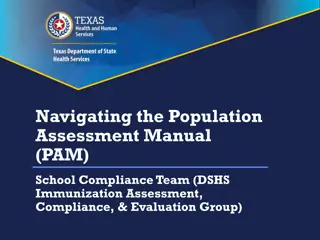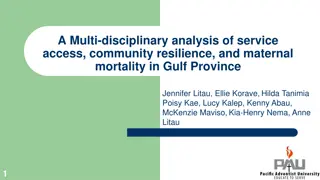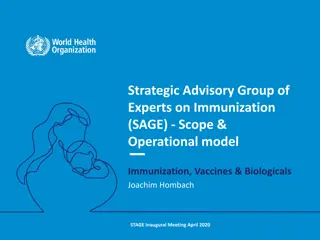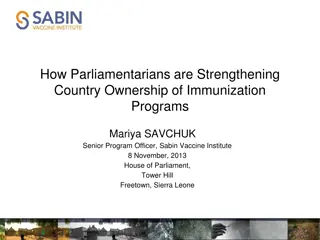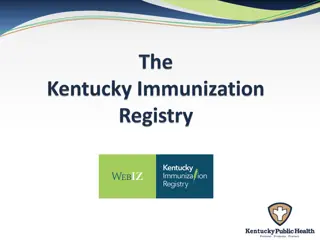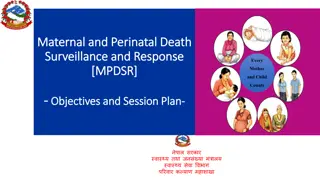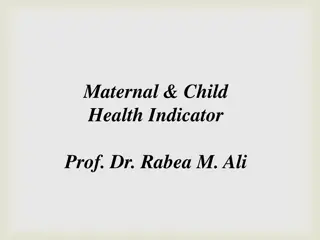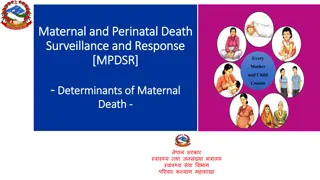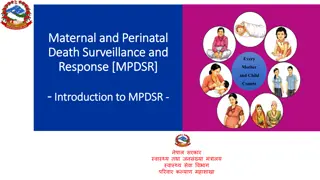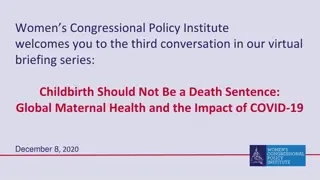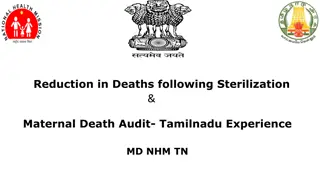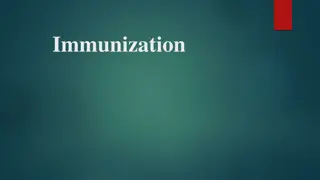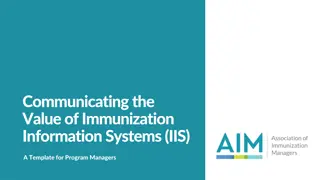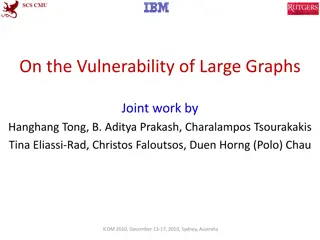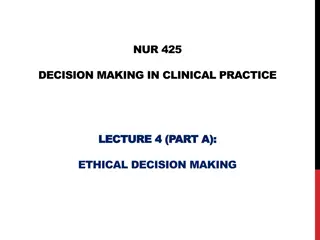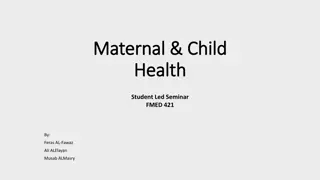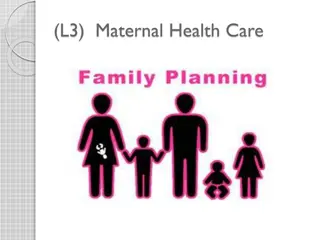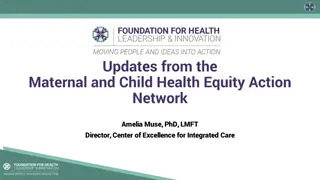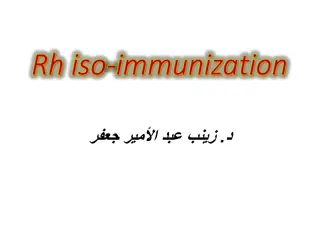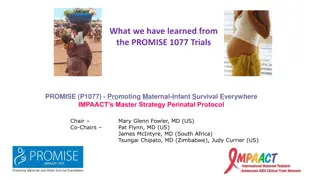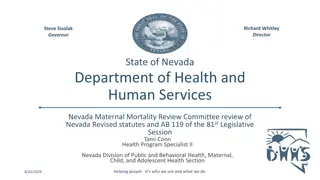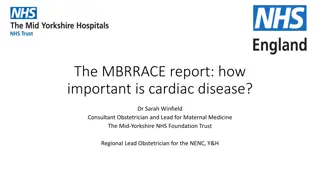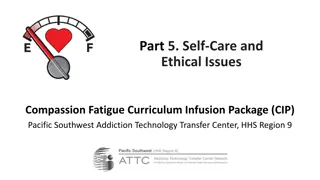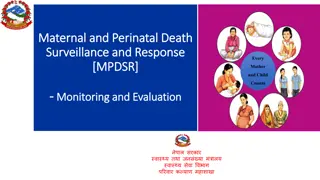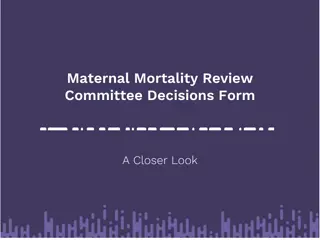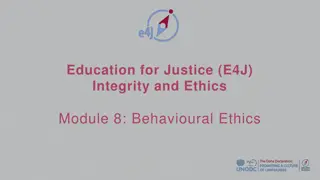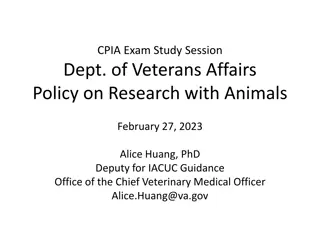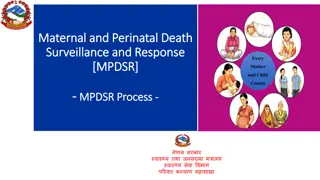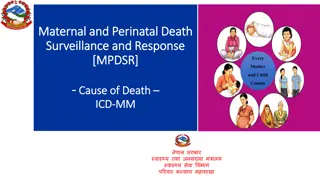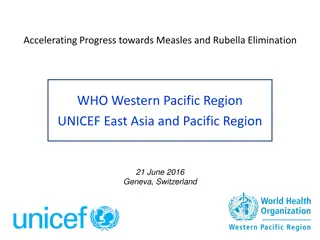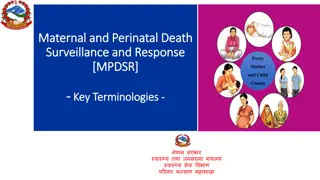Regulatory and Ethical Considerations in Maternal Immunization in the EU
This advisory discusses regulatory and ethical considerations in maternal immunization in the EU, highlighting the use of medicinal products for pregnant women. It touches on important documents guiding product characteristics and risk assessment. The goal of using vaccines in pregnancy, whether to protect the mother, child, or both, is addressed. Definitions and guidelines for therapeutic indications regarding target disease, population, and age groups are outlined as well.
Download Presentation

Please find below an Image/Link to download the presentation.
The content on the website is provided AS IS for your information and personal use only. It may not be sold, licensed, or shared on other websites without obtaining consent from the author. Download presentation by click this link. If you encounter any issues during the download, it is possible that the publisher has removed the file from their server.
E N D
Presentation Transcript
NDA Advisory Services Maternal immunization: Regulatory and Ethical considerations in the EU Pieter Neels, MD Independent Regulatory Expert Associate Professor University of Namur Advisory Board Member of NDA Ex- CHMP member for Belgium Ex- Vice-chair VWP (EMA)
Declaration of Interest I signed a non-exclusivity consultancy contract with Novartis V Crucell Holland BV NDAreg GSK Inovigate Gilead Janssen Takeda ITS 2
Introduction In the EU the use of medicinal products is described in the Summary of Product Characteristics (the SmPC) There are two important documents to help Applicants and authorities with the wording on pregnancies: A GUIDELINE ON SUMMARY OF PRODUCT CHARACTERISTICS (SmPC) September 2009 (European Commission document) GUIDELINE ON RISK ASSESSMENT OF MEDICINAL PRODUCTS ON HUMAN REPRODUCTION AND LACTATION: FROM DATA TO LABELLING (European Medicines Agency document) 3
Introduction Concerning the use of vaccines in pregnancy the goal can be To protect the mother Or to protect the child (altruistic) Or both 4
A GUIDELINE ON SUMMARY OF PRODUCT CHARACTERISTICS Definitions on the different concerned sections: 4.1 Therapeutic indications The indication(s) should be stated clearly and concisely and should define the target disease or condition distinguishing between treatment (symptomatic, curative or modifying the evolution or progression of the disease), prevention (primary or secondary) and diagnostic indication. When appropriate it should define the target population especially when restrictions to the patient populations apply. Mandatory conditions of product usage not covered more appropriately in other parts of the SmPC may also be included when relevant, e.g. concomitant dietary measures, lifestyle changes, or other therapy. It should be stated in which age groups the product is indicated, specifying the age limits, e.g. X is indicated in <adults><neonates><infants><children> <adolescents> <aged x to y <years, months>>. 7
A GUIDELINE ON SUMMARY OF PRODUCT CHARACTERISTICS Definitions on the different concerned sections: 4.1 Therapeutic indications In the EU no products are licensed for use in Pregnant women Thus based on clinical data gathered in pregnant women Up to quite recent, clinical trials in pregnant women were considered unethical C. Mary Healy published an article on Vaccines in Pregnant Women and Research initiatives; ClinObstet Gynecol. 2012 Jun; 55(2):474-86. 8
A GUIDELINE ON SUMMARY OF PRODUCT CHARACTERISTICS Definitions on the different concerned sections: 4.3 Contraindications Situations where the medicinal product must not be given for safety reasons, i.e. contraindications, are the subject of this section. Such circumstances could include a particular clinical diagnosis, concomitant diseases, demographic factors (e.g. gender, age) . In general, patient populations not studied in the clinical trial programme should be mentioned in section 4.4 and not in this section unless a safety issue can be predicted Only if pregnancy or breastfeeding is contraindicated, should it be mentioned here. In section 4.6, a cross-reference should be made and further background information provided. 10
A GUIDELINE ON SUMMARY OF PRODUCT CHARACTERISTICS Definitions on the different concerned sections: 4.3 Contraindications Thus contraindications, should be absolute, not just warnings Indications that inadvertent use could harm mother and/or child 11
A GUIDELINE ON SUMMARY OF PRODUCT CHARACTERISTICS Definitions on the different concerned sections: 4.5 Special warnings and precautions for use Information on a specific risk should be given in section 4.4 only when the risk leads to a precaution for use or when healthcare professionals have to be warned of this risk. In general, descriptions of warnings and precautions regarding pregnancy and breast-feeding, ability to drive and use machines, and other aspects of interactions should be dealt with in sections 4.6, 4.7 and 4.5, respectively. However in specific cases of major clinical importance it might be more appropriate to describe specific precautionary measures in this section, , and with cross reference to section 4.5, 4.6, or 4.7. 12
A GUIDELINE ON SUMMARY OF PRODUCT CHARACTERISTICS Definitions on the different concerned sections: 4.6 Fertility, pregnancy and lactation In the overall assessment, all available knowledge should be taken into account, including clinical studies and post-marketing surveillance, pharmacological activity, results from non-clinical studies, and knowledge about compounds within the same class. Efforts should be made to update the recommendations for use during pregnancy and lactation on the basis of increasing human experience in exposed pregnancies which eventually supersede the animal data. 13
A GUIDELINE ON SUMMARY OF PRODUCT CHARACTERISTICS Definitions on the different concerned sections: 4.6 Fertility, pregnancy and lactation (2) The following should be mentioned: Women of childbearing potential / Contraception in males and females ... Pregnancy In general, clinical and non-clinical data should be followed by recommendations. With respect to non-clinical data, only conclusions of the reproductive toxicity studies should be included in this section. Further details should be provided in section 5.3. With respect to clinical data, the section should include comprehensive information on relevant adverse events reported in the embryo, the fetus, neonates and pregnant women, when appropriate. The frequency of such events (for example the frequency of birth defects) should be specified when available. the section should specify the extent of the human experience if no adverse events have been reported in pregnancy. 14
A GUIDELINE ON SUMMARY OF PRODUCT CHARACTERISTICS Definitions on the different concerned sections: 4.6 Fertility, pregnancy and lactation (3) With respect to the recommendations: a) Recommendations on the use of the medicinal product during the different periods of gestation, including the reason(s) for these recommendations, should be given. b) Recommendations for the management of exposure during pregnancy when appropriate (including relevant specific monitoring such as fetal ultrasound, specific biological or clinical surveillance of the fetus or the neonate) should be given. Cross-references can be included in sections 4.3, 4.4 and 4.8, as appropriate. Examples of wording for this section are annexed to the CHMP/SWP guideline on reproduction and lactation. 15
GUIDELINE ON RISK ASSESSMENT OF MEDICINAL PRODUCTS ON HUMAN REPRODUCTION Two important figures from this guideline 16
So far the theory, but In the EU in some countries 2 vaccines are recommended: Following the WHO recommendations: influenza TIV/QIV Following national recommendations Pertussis (but no monovalent pertussis is available thus dTap is given) 21
So far the theory, but In the EU for TIV/QIV a class wording was adopted: Inactivated influenza vaccines can be used in all stages of pregnancy. Larger datasets on safety are available for the second and third trimester, compared with the first trimester; however, data from worldwide use of inactivated influenza vaccines do not indicate any adverse foetal and maternal outcomes attributable to the vaccine. Independent of the route of administration IM of ID Independent of the Applicants data base. Data from literature don t indicate teratogenicity for flu During Pandemic a lot of pregnant women have been vaccinated with success. 22
So far the theory, but However a new influenza guideline is being discussed (for several year now) and this has led to the concept of new versus novel influenza vaccines. Although no exact definition of new and novel is given it is clear that: A new TIV/QIV old-fashioned egg based vaccine is not novel and no new maternal immunisation data should be needed to get the class wording in the 4.6 label in the EU. A novel TIV/QIV recombinant HA technology based vaccine will probably be looked at as new and thus the class wording could be refused. It will be a case by case discussion whether the new product will be in new or novel and whether novel is novel enough 23
So far the theory, but In the EU for dTap no class wording is available, and until quite recent The SmPC of dTpa 4.6 read: Adequate human data on the use of Boostrix during pregnancy are not available and animal studies on reproductive toxicity have not been conducted. As with other inactivated vaccines, one does not expect vaccination with Boostrix to harm the foetus. However, the vaccine should be used during pregnancy only when clearly needed, and the possible advantages outweigh the possible risks for the foetus. The effect of REPEVAX on embryo-foetal development has not been assessed. No teratogenic effect of vaccines containing diphtheria or tetanus toxoids, or inactivated poliovirus has been observed following use in pregnant women. Limited post-marketing information is available on the safety of administering REPEVAX to pregnant women. The use of this combined vaccine is not recommended during pregnancy. It is clear that a decent wording for dTap is clearly needed 24
So far the theory, but The new wording of 4.6 of Boostrix: Safety data from a prospective observational study where Boostrix (dTpa component of Boostrix-IPV) was administered to pregnant women during the third trimester (793 pregnancy outcomes) as well as data from passive surveillance where pregnant women were exposed to Boostrix-IPV or to Boostrix in the 3rd and 2nd trimester have shown no vaccine related adverse effect on pregnancy or on the health of the foetus/newborn child. The use of Boostrix-IPV may be considered during the third trimester of pregnancy. It is clear that a decent wording for dTap is clearly needed Human data from prospective clinical studies on the use of Boostrix-IPV during the first and second trimester of pregnancy are not available. However, as with other inactivated vaccines, it is not expected that vaccination with Boostrix-IPV harms the foetus at any trimester of pregnancy. The benefits versus the risks of administering Boostrix-IPV during pregnancy should be carefully evaluated. Animal studies do not indicate direct or indirect harmful effects with respect to pregnancy, embryonal/foetal development, parturition or post-natal development (see section 5.3). 25
So far the theory, but The new wording of 4.6 of Boostrix: Limited data indicate that maternal antibodies may reduce the magnitude of the immune response to some vaccines in infants born from mothers vaccinated with Boostrix-IPV during pregnancy. The clinical relevance of this observation is unknown. 26
So far the theory, but The new wording of 4.6 of Repevax: The effect of REPEVAX on embryo-foetal development has not been assessed. No teratogenic effect of vaccines containing diphtheria or tetanus toxoids, or inactivated poliovirus has been observed following use in pregnant women. Available data on exposures during pregnancy do not indicate any adverse foetal or maternal outcomes attributable to REPEVAX. The administration of REPEVAX to a pregnant woman should be on the basis of official recommendations or on an individual assessment of the benefits versus the risks. This was changed earlier this year 27
Ethical Aspects of research in maternal immunity I am not an ethicist , but As a regulator: we need data to support a scientific sound SmPC Is an altruistic vaccination ethical? o Years ago it was not o Today, several countries recommend the altruistic vaccination against pertussis: no ethical concerns have been registered Several altruistic vaccination are in the pipeline, the only way to learn whether they are efficacious is via scientific research. 28
Ethical Aspects of research in maternal immunity For new projects, a crucial question for developers exists: What data are needed for a positive decision of the EC before for a CT in pregnant women can start: o Tox data, only 2 species? o Repro-tox o More crucial: how many healthy adults (women) should be tested before the trial in pregnancy can start? 29
Thank you for your attention! Questions? 30



